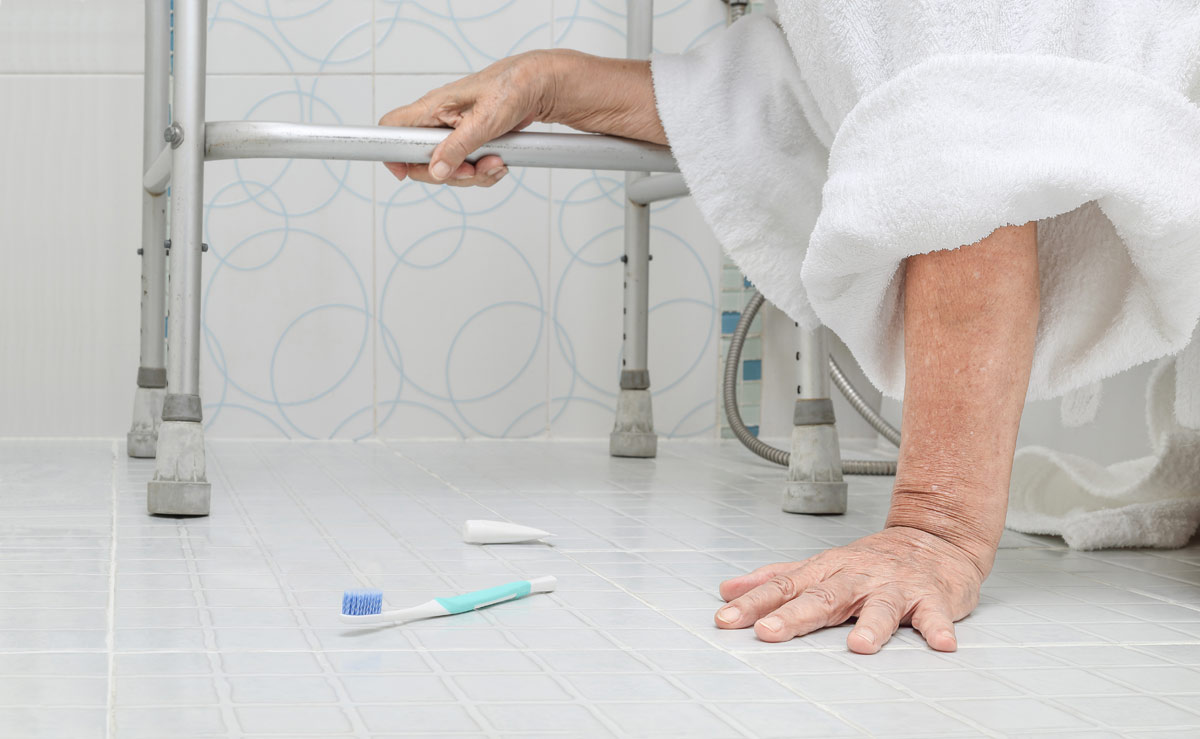Falls are a serious concern for elderly people. This age group tends to be at a higher risk for accidents that can lead to injury or worse. When a senior citizen falls, their hospital stay tends to be nearly twice as long as younger people admitted for the same reason. Our fall risk increases as we get older.
Approximately one-third of people over age 65 report a fall annually. They are the leading cause of death from injury among those in this age group. There are around 9,500 deaths in older people associated with falls each year in the U.S. More than half of all fatal falls involve someone who is over age 75.
Even those who survive a fall can experience long-term effects. One of the most notable is that those who fall often have a loss of mobility or function that is required for independent living.
The best approach is a preventative one. Older adults with an elevated fall risk should consider doing the following.
Get an Assessment from Your Doctor
You should begin mitigating fall risks with a visit to your doctor to discuss a fall prevention plan. They can assess your physical condition and let you know if they have any concerns. Following up with an eye exam can also be helpful to ensure that you can see well to navigate your home.
Your doctor will want to know what medications you are taking, if you have a health condition that could cause a fall, and if you have fallen before. If you have had previous incidents, write down the details including how you fell, where it happened, and when. You should also be prepared to discuss incidents where you started to fall but managed to stop yourself or someone else stopped you.
Stay as Physically Active as You Safely Can
Your physical fitness has a direct connection to your fall risk. The stronger and more agile you are, the less likely you will be to fall.
Your doctor can also discuss how to safely exercise and stay fit. Your activity options may vary based on your age and health status. Water workouts, tai chi, and walking are good options for most seniors.
You should focus on activities that strengthen muscles and improve your flexibility, balance, and coordination. Some seniors consult a physical therapist who can come up with a personalized exercise routine based on their needs.
Wear Comfortable, Well-Fitted Shoes
Heels may look good, or a pair of oversized slippers may be soft, but they can be hazardous. Stick to comfortable, well-fitted shoes that are sensible. Look for those with non-skid soles and low heels. This type of footwear can also help alleviate joint pain.
If your shoes have straps or laces, make sure everything is tied or secured in place when you put them on.
Keep Electrical Cords Behind Furniture
Modern homes tend to have a lot of electrical appliances and devices. Make sure all cords are hidden behind furniture or away from walkways. These can be a dangerous tripping hazard if they are left out in the open.
If you have too much slack, you can buy sturdy zip-ties to coil excess cord, so it is easier to manage.
Secure or Remove Loose Rugs
Rugs look great and can feel nice on your feet, but they can also be a tripping hazard. Make sure all rugs are secured to the ground with an adhesive strip or non-slip rug pad. You should also avoid shaggy or thick rugs that create uneven surfaces. Or you can remove rugs completely to be safe if you are still concerned about them becoming an obstacle.
Throw rugs can be very dangerous for senior citizens. They are easily overlooked when making changes in your home to reduce fall risk. They can trip a person’s feet and can become a bigger problem for those who move with a cane or walker.
Remove Obstacles from Walkways
Furniture and home décor that sits low to the ground should be kept away from high-traffic rooms and walkways. It’s often best to take these items out of your home entirely. They can become a tripping hazard, especially at night when it is harder to see.
If you have a lot of furniture, consider getting rid of things that you don’t need. Fewer objects around your home mean fewer things to trip over.
Clean Up Household Spills Immediately
Spills happen in every household. It’s important to make sure these are cleaned up right away. Liquid spills on hard floors can be very dangerous. Loose items or slick spots on carpeting can also cause a fall.
If you are a senior citizen who is unable to clean up a spill yourself, you should avoid the area until someone can get rid of it for you.
Install Bright Lighting Where You Need It
The better you can see, the more likely you will be to avoid hitting objects. Make sure your home has bright lights in all the spaces you need it. This includes walkways and rooms you frequently spend time in.
You should also have lighting that you can reach from your bed in case you need to get up at night. A lamp on a nightstand is a good choice. Some headboards have built-in lights. You could also install remote-controlled light fixtures so that you don’t have to stand up to turn them on. Smart light fixtures are a good choice because they often provide more control options and automatic settings.
Add a Non-Slip Mat and Handrails to the Bathtub
Researchers at the National Institute on Aging (NIA) found that 80% of falls happen in the bathroom. That’s why you should take extra care to keep this area as safe as possible. Add a non-slip mat to the tub and on any hard floors as needed.
You should also consider installing handrails in and next to your bathtub. These make it much easier to control getting in and out. Those with increased mobility limitations may need to add a bath chair, which allows you to sit while showering. A raised toilet seat with armrests is also helpful.
Install Railings and Assistive Devices
Handrails can be installed in other parts of your home. All stairs should have rails on both sides. You can apply non-slip treads to steps with hard coverings or bare wood. You should also consider getting a cane or walker if needed for added stability.
Another way to limit fall risk is to move into an assisted living community. These places are designed to provide a safe environment for elderly people. Visit Casas Senior Assisted Living to learn more.

